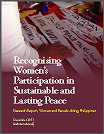Before the event, the “invasion of the Anti-WTO activist” angle in news reportage was hyped up. Scenes of violent demonstrations were broadcasted repeatedly, and warnings against protesters were circulated widely by the police, instilling fear in local residents.
Lam Op Wan and Ip Iam Chong of HK InMedia have analysed the anti-WTO mobilisation and the propaganda campaign waged by HK police and local media against it. In an article they wrote, Wang and Chong report, “From October to November, the public relations department of the Hong Kong police had been issuing warning messages to the media and the general public, particularly the residents living and running business in Wanchai and Causeway Bay, where the demonstration route, protest area and meeting venue (Convention Center) is located. The shopkeepers and restaurant owners were advised to take precaution or even close their doors. The primary and secondary school suspended classes. No road construction work was allowed during this period.”
Rumours spread like wildfire during the week of the 6th Ministerial Meeting. News stories hinted of “conspired violent actions” through stories saying that security uniforms were missing and gas masks were sold out. However, InMedia reports that it was the media companies themselves who bought up all the gas masks from the markets.
While media prepared itself to “paint a horrible and chaotic picture of the anti-WTO movement,” what ensued instead was a week of lively and colorful demonstrations, dispelling the anti-WTO stereotypes set in the past.
Associated Press (AP) reported that events were a “street display of modern protest tactics.” “The protests in Hong Kong have been carefully choreographed -- more street theater than violent demonstration” said AP.
The AP report also said that Hong Kong TV and newspapers covered the protest as a “sporting event.” It further said: “The daily Wen Wei Po newspaper even printed a box score that compared the police and protesters in terms of their numbers, weapons, strategy and results. The item gave the victory to the police, who wore down the protesters by rotating fresh forces.”
Despite these attempts to use mainstream media to create “public opinion” against supporters and sympathisers, HK InMedia believes that the Hong Kong government failed to override alternative interpretations. According to the alternative media organisation, compared to the previous anti-WTO movements, local residents felt sympathetic with the causes of the protestors, particularly the Korean farmers. Despite the coverage of the events as violent, onlookers who had witnessed the event did not believe in the government’s propaganda. In fact, HK InMedia said most civilian casualties were caused by police’s teargas and batons and not those of the protesters.
In the end, they say that “the people's voices resisted against the propaganda machine of the government and WTO, and became a significant part of Hong Kong people's collective memory. This strong local-global connection stands out in the history of global social movement.”
Sources:
“What will people remember? A review of global anti-WTO movement in Hong Kong” by Lam Oi Wan and Ip Iam Chong. From HK InMedia <http://targetwto.revolt.org/node/192>.
“Korea farmers inspire fear and loathing in HK,” posted on 15 December 2005 at the Manila Times website <http://www.manilatimes.net/national/2005/dec/15/yehey/world/20051215wor3.html>.
“Poor countries flex muscles at WTO talks,” posted on 15 December 2005 at AFP: ChannelNewsAsia <http://www.channelnewsasia.com/stories/afp_asiapacific_business/view/183753/1/.html>.
“S. Korea protests galvanize Hong Kong media” by William Foreman, posted on 15 December 2005 at the Associated Press: MediaChannel.org website <http://mediachannel.org/blog/node/2362>.
“Press Coverage of Anti-WTO Demo in Hong Kong” by John Browns Army, posted on December 13, 2005 at the Autonomy and Solidarity website <http://auto_sol.tao.ca/node/view/1653>
“WTO Ministerial Conference of 1999,” modified on 3 January 2006. From Wikipedia, the free encyclopedia <http://en.wikipedia.org/wiki/WTO_Ministerial_Conference_of_1999>.





 The
The 
 Isis Resource Center holds one of the largest feminist collections of materials in the Global South. With 40 years of publication experience, Isis holds a vast collection.
Isis Resource Center holds one of the largest feminist collections of materials in the Global South. With 40 years of publication experience, Isis holds a vast collection.